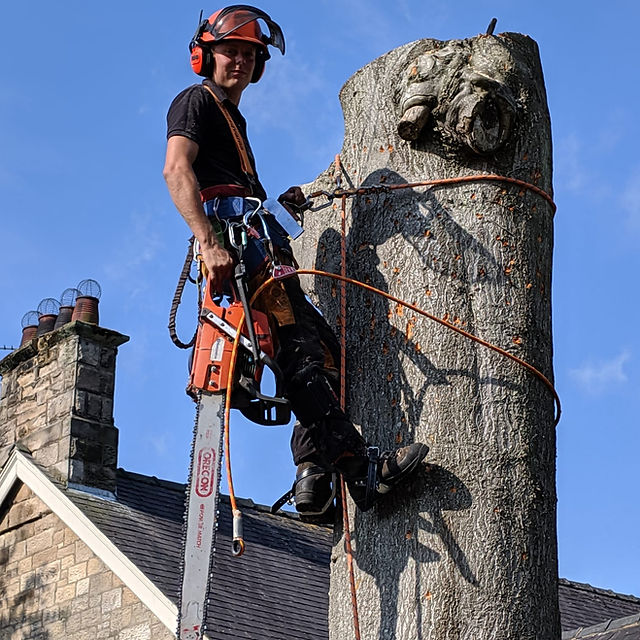The Right Way to Prepare to Become a Tree Surgeon
Becoming a tree surgeon is a fulfilling career choice for individuals passionate about arboriculture and the well-being of trees. Aspiring tree surgeons must possess a deep understanding of tree maintenance, care, removal, and related services.

Tree Maintenance: A Foundation for Tree Surgeons
Understanding the Significance of Tree Maintenance
Tree maintenance forms the backbone of a tree surgeon’s skillset. This section will delve into the importance of routine tree maintenance, including pruning, trimming, and overall tree health assessments. It will emphasize the role of tree maintenance in promoting growth, structural integrity, and the prevention of potential hazards.
Pruning and Trimming Techniques
As a tree surgeon, proficiency in pruning and trimming is crucial. We will explore the various pruning methods, including crown thinning, crown reduction, and deadwooding, highlighting the appropriate tools, techniques, and timing required for each. Understanding how to optimize tree health and aesthetics through pruning is essential for a successful career in arboriculture.
Tree Health Assessments and Diagnosis
Tree surgeons must be skilled in assessing the health of trees and diagnosing potential issues. This subsection will cover techniques for identifying signs of disease, pest infestations, and structural problems. We will discuss the importance of early detection and accurate diagnosis to provide appropriate care and treatment.
Tree Care: Nurturing Tree Health and Vitality
Watering and Irrigation Strategies
Aspiring tree surgeons should be well-versed in effective watering techniques and irrigation systems. This section will explore different watering methods, frequency guidelines, and the importance of water conservation practices in arboriculture.
Disease and Pest Management
Tree surgeons must possess knowledge of common tree diseases and pests, along with effective management strategies. We will discuss the identification, prevention, and treatment of prevalent tree diseases and pests. Emphasis will be placed on integrated pest management techniques and environmentally friendly approaches to minimize chemical usage.
Soil Analysis and Nutrient Management
Understanding soil composition and fertility is essential for maintaining tree health. This subsection will cover soil analysis techniques, including pH testing and nutrient assessment. Aspiring tree surgeons will learn about soil amendments, organic fertilizers, and sustainable practices to optimize soil health for thriving trees.
Tree Removal: Mastering Safe and Efficient Practices
Reasons for Tree Removal
Tree surgeons must be skilled in assessing when tree removal is necessary. This section will discuss common reasons for tree removal, including safety concerns, disease, storm damage, and structural instability. Understanding the decision-making process and considering alternatives to removal will be emphasized.
Tree Removal Techniques and Equipment
Proficiency in tree removal techniques and equipment is a vital aspect of a tree surgeon’s skillset. We will explore different methods of tree removal, such as sectional dismantling and straight felling. Safety protocols, the use of appropriate personal protective equipment (PPE), and proper equipment selection will be highlighted.
Tree Lopping and Pruning: Differentiating Sustainable Practices
Understanding Tree Lopping
Tree lopping, often misunderstood, involves the removal of large branches or tree tops. Aspiring tree surgeons should grasp the potential risks and negative effects associated with improper tree lopping. This section will shed light on the importance of avoiding indiscriminate and excessive lopping, which can lead to weakened tree structures, increased susceptibility to diseases and pests, and overall tree health decline.
Pruning as an Alternative to Tree Lopping
As a responsible tree surgeon, promoting sustainable practices such as proper pruning techniques is paramount. This subsection will highlight the benefits of pruning over tree lopping. Pruning, when done correctly, promotes healthier tree growth, reduces potential hazards, and enhances the tree’s aesthetics. We will delve into the principles of selective pruning, crown shaping, and maintaining proper branch architecture to ensure the long-term vitality of trees.
Stump Grinding: Ensuring Complete Removal and Site Restoration
The Significance of Stump Removal
Tree surgeons should be proficient in stump removal techniques to ensure complete tree removal and site restoration. This section will emphasize the importance of removing tree stumps, as they can pose safety hazards, impede construction or landscaping plans, and serve as breeding grounds for pests and diseases. We will explore the benefits of stump grinding as an efficient and environmentally friendly method of stump removal.
Professional Tree Services: Delivering Expertise and Care
The Role of Tree Service Providers
Tree surgeons often work within professional tree service companies or operate their own businesses. This section will explore the importance of tree service providers in maintaining urban forestry, preserving tree health, and ensuring public safety. The responsibilities, skills, and qualifications necessary for a successful career in professional tree services will be highlighted.
Client Communication and Consultation
Effective communication with clients is crucial for tree surgeons. This subsection will address the significance of client consultation, understanding their needs and expectations, and providing expert advice on tree maintenance, care, and removal. Building client relationships based on trust, professionalism, and clear communication is key to a successful tree service business.